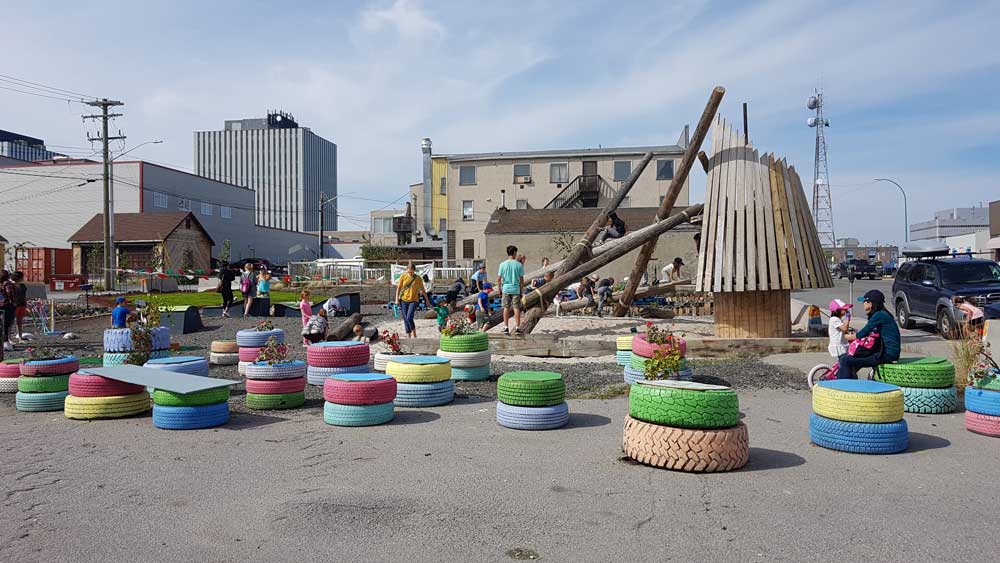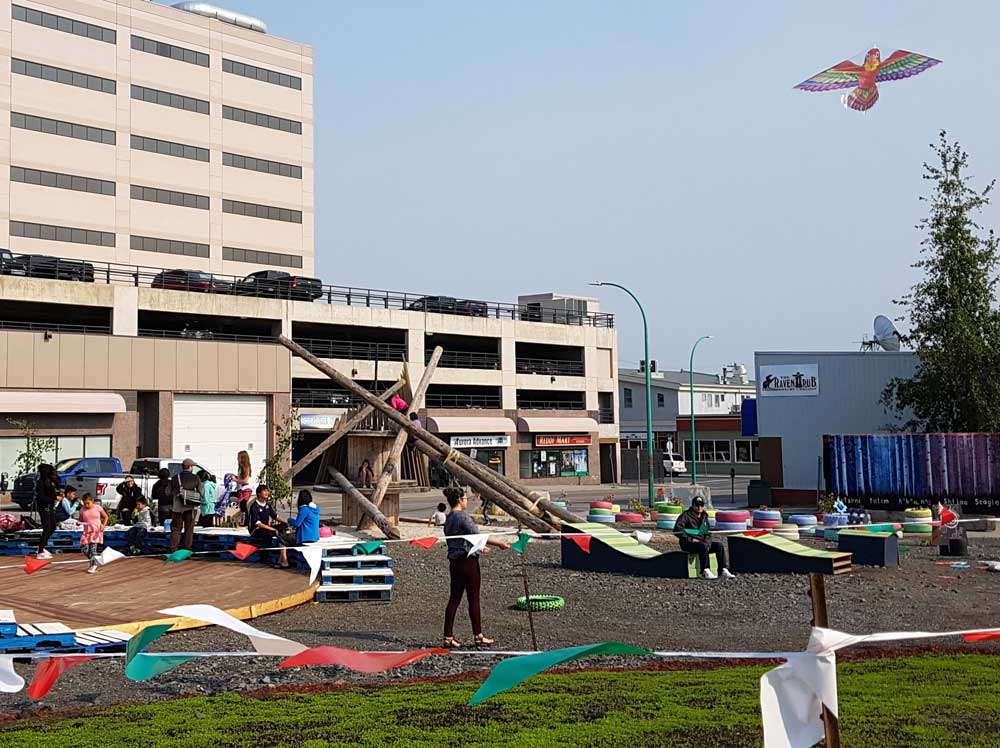Popuppark1 / credit author
Developing a manual and framework for iterative place-making in Canada’s North
Thevishka Kanishkan, MLA Candidate, University of Toronto / Recipient of the Northern Research Fund Grant / Grant $2,000
Canada’s northern communities are changing fast. Climate change will lead to numerous social, economic, and infrastructure changes, including melting permafrost; possibility for food production; increased populations, shared wealth, and tourism; and a shifting sense of place, traditions, and connection to the land for Indigenous people. In addition, expanded natural resource exploration, tourism, and a history of “building wherever possible” has led to seasonal and temporary population booms, exacerbated social barriers, and undemocratic urban design decisions in these communities.
Iterative place-making is a tool of user-generated urbanism that can establish citizens’ right to the built environment in their communities, improve safety, create a sense of place and belonging in times of flux.
The goal of this Master’s thesis is two-fold. To develop an easy-to-read well-designed manual for every day northerners to use for iterative place-making. And secondly, development of a framework for iterative place-making in the north for landscape architects to build upon within the profession.
Updates_Mises à jour
19.05.31 + 19.07.12
- Thesis > Presentation panels
- Thesis > Abstract + Report
- Thesis > Bibliography and References
Thevishka has successfully defended his MLA thesis (panels, summary, bibliography attached). The panels were part of the final presentation. The thesis provides an understanding of how the Dene oral history of the landscape narrative has that has been been disrupted due to loss of traditions.
The implication of this project for the field of landscape architecture is to question how we, in our practice, meaningfully engage with Indigenous histories and worldviews, and the living heritage of a place. We might ask ourselves whether infrastructure, or built objects, could be considered differently, and how the highly experiential and qualitative methodology of storytelling might be incorporated into our work. In designing heritage landscapes specifically, we could give more careful thought to the traditions being commemorated, and effective ways to celebrate ways of life that are still practiced today.
FR_ Élaborer un manuel et un cadre pour la création itérative de lieux dans le Nord canadien
Thevishka Kanishkan, candidat à la M.A.P., Université de Toronto / Bourse 2000 $ / Lauréate de la bourse du Fonds de recherche nordique
Les collectivités nordiques canadiennes évoluent rapidement. Le changement climatique entraînera de nombreux bouleversements sociaux, économiques et infrastructurels, notamment : fonte du pergélisol; production alimentaire; augmentation de la population, partage des richesses et tourisme; évolution du sentiment d’appartenance, des traditions et du lien à la terre des peuples autochtones. De plus, l’augmentation du tourisme et de la prospection des ressources naturelles, et la pratique de « construire partout où c’est possible » ont entraîné des booms saisonniers et temporaires de la population, des barrières sociales exacerbées et des décisions non démocratiques en matière d’urbanisme dans ces collectivités.
L’aménagement itératif de lieux est un outil d’urbanisme qui établit le droit des citoyens à un environnement bâti sain dans leurs communautés, qui améliore la sécurité et qui crée un sentiment d’appartenance en période de mutation.
L’objectif de ce mémoire de maîtrise est double. Premièrement, rédiger en langage clair un manuel bien conçu que les habitants du Nord pourront utiliser au quotidien pour l’aménagement de lieux. Et deuxièmement, élaborer un cadre pour l’aménagement itératif de lieux dans le Nord, à l’intention des architectes paysagistes au sein de la profession.


